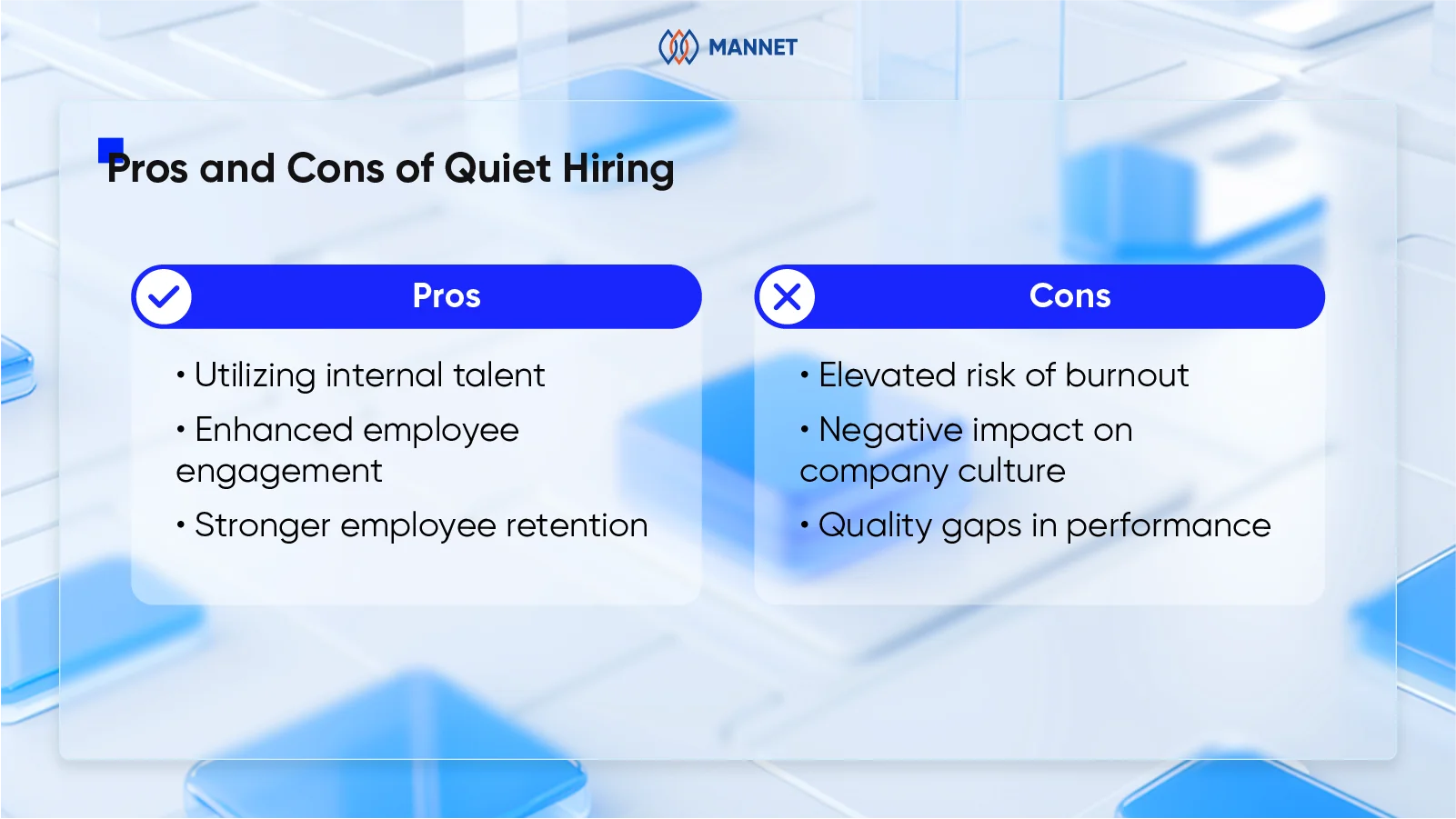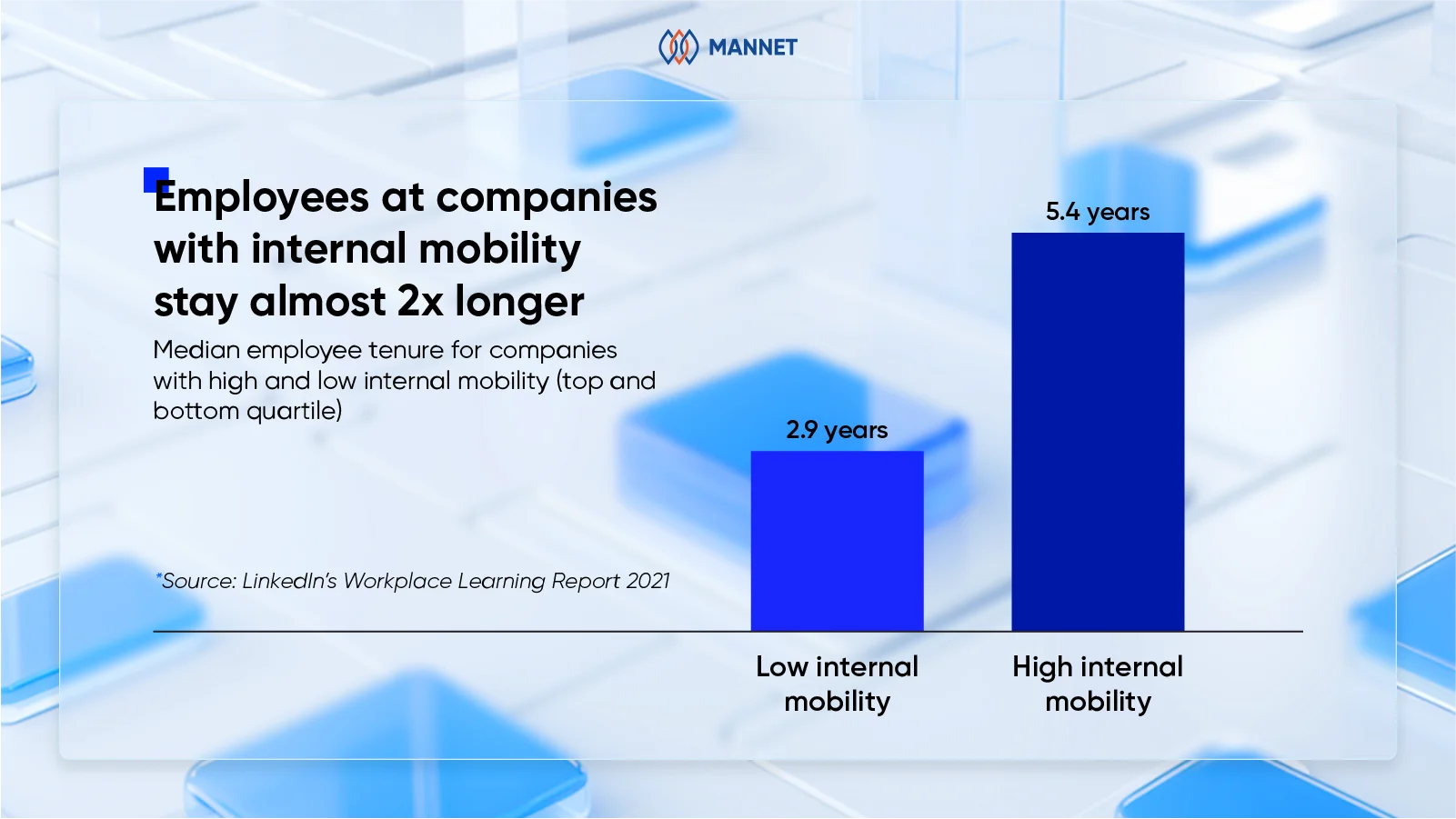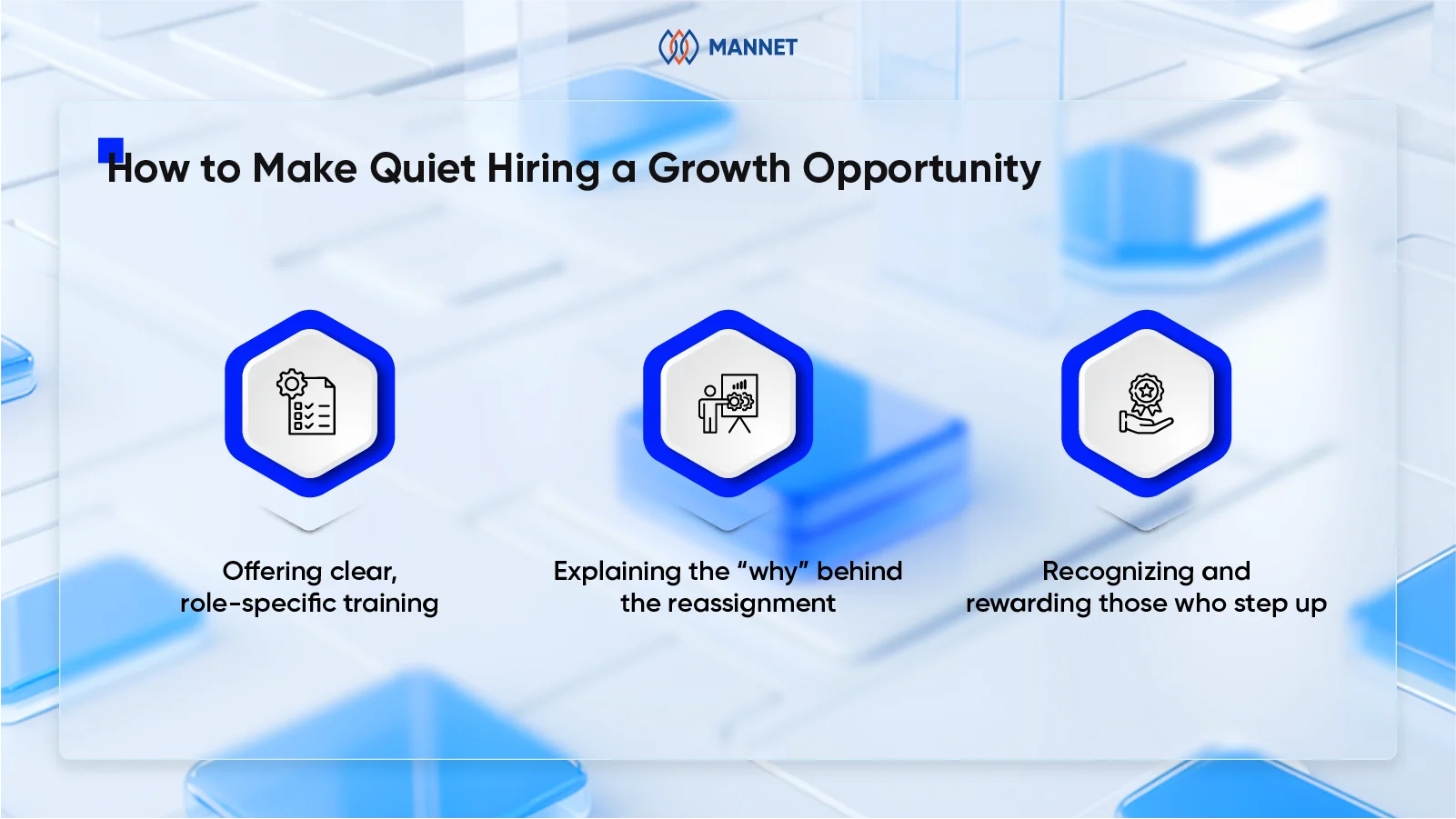While the idea of tapping internal talent for new roles isn’t new, the term “quiet hiring” has taken on new life alongside other viral workplace trends like quiet quitting and quiet firing.
The 2023 Gartner Future of Work Trends report spotlighted quiet hiring as one of the top emerging trends, and for good reason. Especially in industries facing talent shortages or fast-paced change, quiet hiring offers a way to build capacity, not just headcount.
In this blog, we’ll unpack what quiet hiring really means, explore the advantages and downsides of it, and help companies assess whether it’s a smart fit for business needs.
Now, let’s dive in!
What Is Quiet Hiring?

What is quiet hiring?
According to Gartner, “quiet hiring is the practice of an organization acquiring new skills without hiring new full-time employees.”
In other words, companies use it to get the skills they need in smarter ways. Rather than recruiting externally, companies strategically shift internal talent or engage external experts to get critical work done.
In practice, quiet hiring typically takes three forms:
- Engaging contract or freelance workers with in-demand skills to address immediate gaps.
- Reassigning internal employees to high-priority departments or projects that are understaffed.
- Upskilling existing talent by offering training opportunities so employees can take on new roles or broader responsibilities.
Ongoing labor shortages have turned this trend into a necessity. Many employers are struggling to find enough people to fill in-demand roles, particularly in frontline positions.
What is new, however, is the opportunity. Companies willing to adopt a more agile and mindset-driven approach to staffing may discover meaningful improvements in their talent strategies. At a time when skilled professionals are hard to find, quiet hiring offers a high-impact, low-risk path to staying competitive.
Pros and Cons of Quiet Hiring

Pros and cons of quiet hiring
Pros
Utilises internal talent
Quiet hiring makes the most of the people businesses already have. By shifting or reassigning existing team members to fill urgent roles, companies can stay agile without going through lengthy recruitment processes.
Enhanced employee engagement
When done right, quiet hiring can be empowering. Employees who are given new challenges or development opportunities often feel more valued and invested in the company’s success. In fact, employees who transition into new roles internally are 3.5 times more likely to be engaged compared to those who remain in their current positions .

employees with internal mobility stay longer
Stronger employee retention
Investing in internal mobility and upskilling signals a long-term commitment to the workforce of a company. This not only helps retain top talent but also improves morale and reduces turnover.
Cons
Elevated risk of burnout
While reallocating talent may seem efficient, it can put additional strain on employees already operating at full capacity. The Guardian suggests that this approach, if not managed carefully, could result in higher stress levels and even more instances of quiet quitting.
Negative impact on company culture
A lack of transparency in quiet hiring decisions can create confusion, disengagement, or even distrust. Employees may interpret the changes as cost-cutting rather than career-building, especially if role shifts occur without clear communication or rationale.
Quality gaps in performance
Not every reassigned employee will have the necessary skills or experience for a new role. Without proper training or oversight, this can lead to reduced work quality and performance issues.
How To Determine Whether Quiet Hiring Is Right For A Company

Determine whether quiet hiring is for your company
Assess internal skills and capability gaps
Start with a skills inventory of the company’s current workforce. Identify what skills are available, which ones are missing, and whether those gaps can be filled internally or require outside help.
For example, if an enterprise is missing AI expertise but has software engineers familiar with Python, upskilling might work. But if it lacks domain-specific knowledge (e.g., finance or compliance), hiring a contractor may be the better route.
Also, assess organizational culture. Quiet hiring works best in environments that embrace internal mobility and flexible roles. In rigidly structured teams, unexpected reassignments can cause confusion or resistance.
Evaluate real workload capacity
Before assigning new responsibilities to current employees, assess whether they have the bandwidth to handle additional work without becoming overwhelmed.
If teams are already stretched thin, quiet hiring can lead to burnout, performance drops, and turnover. Use tools like workload reports or regular 1-on-1s to assess capacity. If needed, redistribute work rather than stacking it on top of existing responsibilities.
Position it as career growth
Quiet hiring only works if employees see it as a growth opportunity, not just as “doing more with less.”

Make quiet hiring a growth opportunity
To make that happen, businesses might consider:
- Offering clear, role-specific training.
- Explaining the “why” behind the reassignment.
- Recognizing and rewarding those who step up.
Without proper support and transparency, the move can feel like a cost-cutting tactic rather than a career-building opportunity.
Evaluate short-term vs. long-term needs
Quiet hiring works well for short-term projects or immediate business needs, but it may not be suitable for roles that demand long-term focus or deep specialization.
Employers should carefully assess whether a skill gap requires a temporary workaround or a permanent hire.
Ensure legal and HR compliance
If the version of quiet hiring includes freelancers, gig workers, or agency contractors, be sure that businesses:
- Have clear, legally sound contracts in place.
- Properly classify workers (contractor vs. employee).
- Follow labor laws, tax rules, and working-hour regulations, especially if you operate across different jurisdictions.
Noncompliance could lead to penalties, lawsuits, or reputational risk.
FAQs About Quiet Hiring
- What is quiet hiring?
Quiet hiring is the practice of giving current employees more responsibilities instead of bringing on new hires. This could mean giving an employee another role, giving them extra tasks through side projects or upskilling, or hiring a contract or temporary worker.
- Is quiet hiring good or bad?
It depends. When done well, employees get to expand their skill sets and build their careers by taking on more responsibility or a new role. But quiet hiring done poorly can lead to a drop in employee engagement and ultimately result in burnout.
- Is quiet hiring legal?
Yes, quiet hiring is legal. It’s simply the practice of using alternative approaches to build needed skills within an organization instead of bringing on new full-time employees. There’s nothing inherently illegal about this strategy.
Final Thoughts on Quiet Hiring
Quiet hiring is a smart, evolving approach to talent acquisition, which helps companies bring in the skills they need without traditional hiring processes. By tapping into trusted networks, shifting internal resources, or engaging external experts, businesses can close critical talent gaps efficiently and with flexibility.
If you’re exploring alternative hiring models but still need high-quality tech talent to move fast, ManNet can support you. We provide staff augmentation services, allowing you to integrate skilled professionals directly into your existing team and boost the capacity of your development.
Talk to us if you’re rethinking how to build your team, quietly or not.





